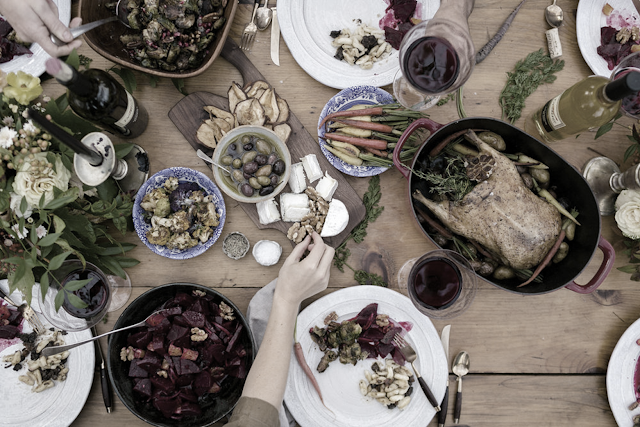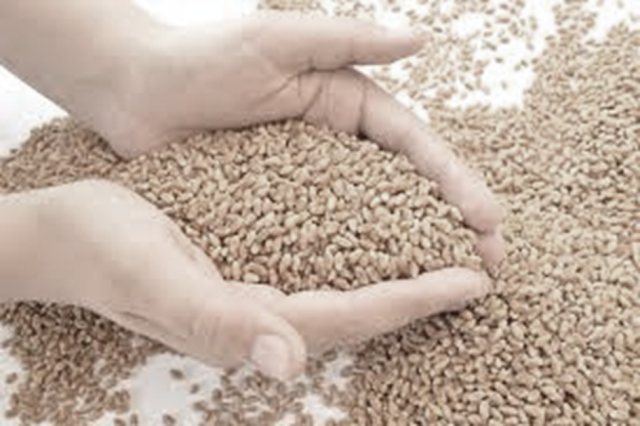Forget
sugary cereals and pastries. If you want to fuel a long, vibrant life, look to
the breakfast tables of the world's "Blue Zones." These unique
regions, identified by longevity researcher Dan Buettner, are home to
populations with exceptional life expectancies and remarkably low rates of
chronic diseases like heart disease and diabetes. And according to Buettner,
their secret to morning energy and lifelong health starts with what they eat
for breakfast.
Buettner,
who coined the term "Blue Zones" and has spent decades studying these
communities, emphasizes that breakfast isn't just another meal in these
cultures; it's often the most
important one. He champions the adage: "Breakfast like a king, lunch
like a prince, and dinner like a pauper." Residents
of places like Okinawa (Japan), Sardinia (Italy), Ikaria (Greece), Nicoya
(Costa Rica), and Loma Linda (California, USA) typically consume their largest,
most nutrient-dense meal in the morning. They then gradually eat smaller
portions throughout the day, often finishing dinner early and allowing for a
natural overnight fast.
A vibrant collage featuring traditional breakfasts from different Blue Zones
So, what
sets a Blue Zone breakfast apart from the typical Western morning spread laden
with sugar and refined carbs? Buettner is clear: "People should avoid most
of what is marketed to us in America as breakfast foods, such as Pop-Tarts,
sugar-laden cereals, yogurts, and granola." Instead, he urges us to take
"a page out of the blue zones and eat a hearty, healthy breakfast."
Based on
his extensive research, Buettner identifies six key food groups consistently
found on the breakfast plates of the world's longest-living people:
Beans: The Protein & Fiber Powerhouse
·
Why they reign supreme: Beans are arguably the cornerstone
food across all Blue Zones. Whether it's black beans in Nicoya, soybeans (tofu,
natto, miso) in Okinawa, lentils in Ikaria, or chickpeas in Sardinia, these
humble legumes are consumed daily, often at breakfast.
·
The Longevity Science: Beans are nutritional superstars.
They are packed with plant-based protein, keeping you full and supporting
muscle maintenance. They are exceptionally high in fiber, crucial for gut
health, stable blood sugar levels, and reducing cholesterol. Beans also provide
complex carbohydrates for sustained energy, along with essential vitamins and
minerals like folate, iron, potassium, and magnesium. Their high fiber and
protein content contribute significantly to heart health and weight management
– key factors in longevity.
·
Blue Zone Breakfast Examples: Black bean soup
or gallo pinto (rice and beans) in Costa Rica; miso soup (made from fermented
soybeans) in Japan; lentil soup in Greece; minestrone or fava bean soup in
Sardinia.
Vegetables: The Antioxidant & Nutrient Foundation
·
Why they reign supreme: Starting the day with vegetables
might seem unusual in the West, but it's standard practice in Blue Zones.
Breakfasts often feature a variety of seasonal, locally grown vegetables.
·
The Longevity Science: Vegetables are bursting with
vitamins, minerals, antioxidants, and phytonutrients that combat inflammation
and oxidative stress – fundamental processes underlying aging and chronic
disease. They are low in calories but high in volume and fiber, promoting satiety
without excess calories. Leafy greens (rich in folate and vitamin K), root
vegetables (packed with vitamins and minerals), and cruciferous veggies (known
for cancer-fighting compounds) are common stars.
·
Blue Zone Breakfast Examples: Minestrone soup
loaded with carrots, celery, kale, and tomatoes (Sardinia, Buettner's personal
choice); sweet potatoes (Okinawa); greens like amaranth or dandelion sautéed
with olive oil (Ikaria); fresh tomatoes or cucumbers alongside other dishes.
Whole Grains (Especially Oats & Rice): The Sustained Energy Source
·
Why they reign supreme: Whole grains provide the complex
carbohydrates that fuel Blue Zone mornings. Oats and rice (particularly brown
rice) are prominent players, offering steady, long-lasting energy without the
blood sugar spikes of refined grains.
·
The Longevity Science: Whole grains retain their bran and
germ, making them rich in fiber, B vitamins, minerals (like magnesium and
selenium), and antioxidants. The fiber slows digestion, preventing energy
crashes and promoting gut health. Oats, specifically, contain beta-glucan, a
soluble fiber proven to lower LDL ("bad") cholesterol. Brown rice
offers more nutrients and fiber than white rice.
·
Blue Zone Breakfast Examples: Steel-cut or
rolled oats porridge, often topped with fruit or nuts (Loma Linda); brown rice,
sometimes mixed with beans (Nicoya - gallo pinto, Okinawa - often alongside
other dishes); whole-grain sourdough bread (Sardinia, Ikaria), usually dipped
in olive oil or paired with vegetables, not jam.
Fruits: Nature's Sweet & Nutritious Treat
·
Why they reign supreme: Fresh, locally grown fruit is a
common and delightful component of Blue Zone breakfasts, adding natural
sweetness, vitamins, and fiber.
·
The Longevity Science: Fruits are excellent sources of
essential vitamins (like Vitamin C and various B vitamins), minerals (like
potassium), antioxidants, and fiber. The antioxidants help neutralize harmful
free radicals, reducing cellular damage. The fiber aids digestion and blood
sugar control. Fruits provide hydration and a satisfying sweetness without
processed sugars.
·
Blue Zone Breakfast Examples: Papaya,
bananas, or other tropical fruits (Nicoya); seasonal berries or stone fruits
added to oatmeal (Loma Linda); fresh figs or oranges (Sardinia, Ikaria); often
consumed whole or lightly prepared, not as juice.
Miso (Fermented Soy): The Probiotic & Umami Boost
·
Why it reigns supreme: Particularly central to the
Okinawan diet, miso – a fermented soybean paste – is a breakfast staple,
typically consumed as miso soup.
·
The Longevity Science: Fermentation is a key process in
many Blue Zone foods. Miso is rich in probiotics (beneficial bacteria) that
support a healthy gut microbiome, increasingly linked to overall immunity,
inflammation reduction, and even mental health. It's also a good source of
protein, B vitamins, and minerals. Miso provides a savory, umami flavor depth
without relying on excessive salt or unhealthy fats. The fermentation process
may also increase the bioavailability of nutrients and create beneficial
compounds.
·
Blue Zone Breakfast Example: Miso soup,
often containing tofu (another soy product) and seaweed, sometimes with small
amounts of vegetables (Okinawa).
Oats: The Heart-Healthy Champion
·
Why they reign supreme: Oats deserve their own spotlight
alongside the broader whole grains category due to their prominence, especially
in the Loma Linda Blue Zone (home to many Seventh-day Adventists).
·
The Longevity Science: As mentioned under whole grains,
oats are exceptional due to their high beta-glucan soluble fiber content. This
fiber forms a gel in the gut, binding to cholesterol-rich bile acids and
removing them from the body, thereby actively lowering LDL cholesterol – a
major factor in heart disease prevention. Oats also provide sustained energy,
protein, magnesium, and antioxidants called avenanthramides, which have
anti-inflammatory effects.
·
Blue Zone Breakfast Example: A warm bowl of
oatmeal, often steel-cut or old-fashioned rolled oats for maximum fiber,
frequently topped with fresh fruit (like berries or bananas) and nuts or seeds
(Loma Linda).
Beyond the Food List: The Blue Zone Breakfast Philosophy
Incorporating
these six foods is powerful, but embracing the broader Blue Zone approach to
breakfast is equally important:
1.
Make it the Biggest Meal (or at least substantial): Prioritize
calories and nutrients earlier in the day when your body needs fuel for
activity and metabolism is more active. Avoid heavy, late dinners.
2.
Focus on Whole, Plant-Based Foods: While not
strictly vegan (some zones include small amounts of dairy, eggs, or fish), Blue
Zone diets are overwhelmingly plant-centric. Breakfast reflects this, built on
beans, grains, vegetables, and fruits.
3.
Minimize Sugar and Processed Foods: Refined sugars,
flours, and heavily processed "breakfast" items are virtually absent.
Natural sweetness comes from fruit.
4.
Include Healthy Fats: While not always explicitly
mentioned as a separate "breakfast food," healthy fats like olive oil
(drizzled on vegetables or bread in Sardinia/Ikaria) or nuts/seeds (on oatmeal
in Loma Linda) are integral parts of these nutritious morning meals.
5.
Enjoy it Mindfully: Meals in Blue Zones are often
social occasions, eaten slowly and enjoyed without rushing or distraction.
Putting it into Practice: Your Longevity Breakfast Challenge
You don't
need to move to Sardinia or Okinawa to benefit. Dan Buettner himself takes his
own advice: "I often start my day with a minestrone stew full of
vegetables and beans." He even issues a challenge: "I challenge
everyone reading this to try eating minestrone stew or rice and beans as their
breakfast for a week and see how they feel."
Here are
practical ways to incorporate these principles:
·
Savory Oatmeal Bowl: Cook oats with vegetable broth.
Top with sautéed spinach, mushrooms, tomatoes, a sprinkle of beans (like white
beans or chickpeas), and a drizzle of olive oil.
·
Hearty Bean & Veggie Soup/Stew: Prepare a large
batch of minestrone, lentil soup, or black bean soup on the weekend. Reheat a
portion for a quick, powerful breakfast.
·
Rice and Beans Reinvented: Leftover brown
rice and beans (like black or pinto) make a great base. Add sautéed peppers and
onions, some salsa, and avocado for a Tex-Mex twist.
·
Tofu Scramble: Crumble firm tofu and sauté with turmeric (for color),
nutritional yeast, and your favorite veggies (onions, peppers, spinach,
tomatoes). Serve with a side of whole-grain toast.
·
Big Green Smoothie (Use Wisely): While whole
foods are ideal, a smoothie can work if packed with greens (spinach, kale), a
small portion of fruit (berries, half banana), plant-based protein (tofu, hemp
seeds), healthy fat (avocado, nut butter), and liquid (water, unsweetened plant
milk). Avoid turning it into fruit juice.
·
Overnight Oats: Combine rolled oats, chia seeds, plant milk (or water),
and a pinch of salt in a jar. Refrigerate overnight. In the morning, top with
fresh berries, nuts, and seeds.
·
Whole-Grain Toast Plus: Top whole-grain sourdough with
mashed avocado and tomato slices, or hummus and cucumber, or a thin layer of
nut butter and banana.
Fuel
Your Longevity Journey at Sunrise
The
breakfast habits of the world's longest-living people offer a powerful
blueprint for enhancing our own healthspan. By shifting focus away from sugary,
processed convenience foods and towards hearty, whole-food, plant-centric meals
rich in beans, vegetables, whole grains (especially oats and rice), fruits, and
fermented foods like miso, we nourish our bodies with the nutrients needed for
sustained energy, disease prevention, and cellular health. Embracing the
"breakfast like a king" philosophy – making the morning meal
substantial and nutrient-dense – aligns with our natural metabolic rhythms and
sets a positive tone for the entire day. It’s not about a restrictive diet, but
about adopting sustainable, delicious habits inspired by cultures that have
mastered the art of living well, for a very long time. Why not take Buettner's
challenge and see how a Blue Zone-inspired breakfast transforms your morning?
Disclaimer:
The health tips shared on
this blog are for informational purposes only and are not a substitute for
professional medical advice. Always consult a qualified healthcare provider
before making changes to your health routine. Content is based on publicly
available sources and edited for clarity.











.webp)





.webp)


.webp)


0 Comments